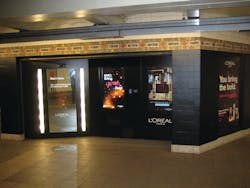What can you learn from the Customer Engagement Show?
There were several interesting presentations at the Customer Engagement Technology World (CETW) Show, with really important lessons for our channel. Two provided highly meaningful insights with direct implications for us: Scott Hudler, Vice President – Global Customer Engagement, Dunkin’ Donuts – Consumer Engagement Must Be 360 Degrees, 365 Days a Year; Derek Gaskins, Chief Customer Officer, Rutter’s Farm Stores – App Strategy Today and Tomorrow: Translating Your Brand Into an App.
Gaskins, of Rutter’s, looked back to 2009 when his company created and introduced a card-based fuel loyalty program. Rutter’s currently has 74,000+ shoppers enrolled in their program. Gaskins discussed the 3 R’s for the roadmap to engagement.
- Register: It must be easy for the shopper. You’re looking to get the full name, age[1], mobile number and a password/PIN (set by the person registering). Facebook is a key element in the registration and communication process.
- Reward: Need to deliver value, appealing to WIIFM – what’s in it for me. Rutter’s features selected items which give shoppers savings on gas purchases and other promotional deals. For National Coffee Day – if you checked in, you received a free medium cup of coffee.
- Relationships: This is a two-way street. It is critical to be responsive, quickly, to customer comments and, especially, problems or complaints.
Gaskins provided a powerful piece of data. Their best customers are 10% of the shoppers Rutter’s serves. Those best customers are 10-11 times more valuable than the 90% of the customer base. He also used the term SoMoLo. That is Social-Mobile-Loyal.
Their primary objective is to get people to say “Rutter’s – why go anywhere else?” Gaskins summarized by saying that they “have the Rutter’s brand in the palm of our customers’ hands – powered by the 3 R’s.”
Hudler, of Dunkin’ Donuts, said that they started with a mobile app in 2012 and added a loyalty program in 2013. In the first year Dunkin’ had 4,000,000 app downloads. (Do you think that some of those people downloading the Dunkin’ app are your customers too?) For 2014 they will be introducing a customer relationship management platform. They plan to announce product news every four weeks.
Dunkin’ Donuts is upgrading their stores – new construction and remodeling - with digital menu boards and in-store wifi. A brand new Dunkin’ Donuts opened about five miles from my home. Check out the photos. Hudler mentioned geo-targeting shoppers on a weekly basis – because “people like free stuff.” (This is a clear example of why we must be proactive in remote access/management at the sites we serve.)
John Pepelnak, Omnivex, highlighted how media communications have changed. For marketers, looking back, mass media advertising (print and broadcast) was largely uncontrolled – since advertisers could not who (individually) was accessing the content. Then targeted media emerged – where advertisers could reach people through personally addressed messages – from direct mail, to email campaigns, etc. Then the biggest change occurred – the control point shifted to personal control – moving away from the advertiser (or brand) to the shopper – they control what to see or hear or read. That is why we must get moving on social media plans – especially apps for customers at the locations we serve.
Paul Fleuranges, of the New York Metropolitan Transit Authority, presented two new social media and digital signage developments being tested in the New York City subway system. The MTA is seeking to accomplish two objectives: (a) capture more non-fare box revenue; (b) gain better performance from underutilized real estate.
Interactive signs are being tested at five stations. There are interactive maps to help plan travel to your destination – which trains, where to change, etc. These signs will also provide information about delays or service disruptions.
Fleuranges indicated that younger people walk up and realize, almost immediately, how to interact with the map/screen. “Older” people required a bit more time to notice that this is more than a large paper map. Once the testing phase is completed, plans are to expand to 120 screens at 21 additional stations. There will be advertising opportunities using the interactive screens.
At the Bryant Park - 42nd Street Station, L’Oreal deployed an interactive kiosk. It will scan you to detect and recognize the colors you are wearing. Then it will recommend specific cosmetic products – which can be purchased from the kiosk. You can learn more here – from an article in New York Daily News.
[1] Rutter’s needs age, or date-of-birth, since as much as 40% of their sales are age-restricted products.
About the Author

Paul Schlossberg
Contributing Editor
Paul Schlossberg is the president of D/FW Consulting, which helps clients merchandise and market products in impulse intense selling environments, such as vending, foodservice and convenience stores. He can be reached at [email protected] or 972-877-2972; www.DFWConsulting.net.
Most recently he has begun writing a bimonthly online column titled "Sell More Stuff" featured on VendingMarketWatch.com.
